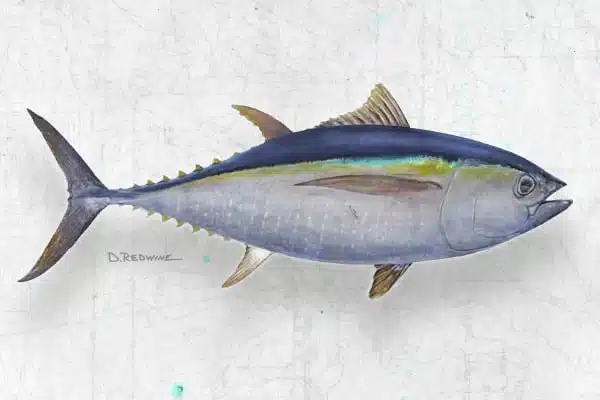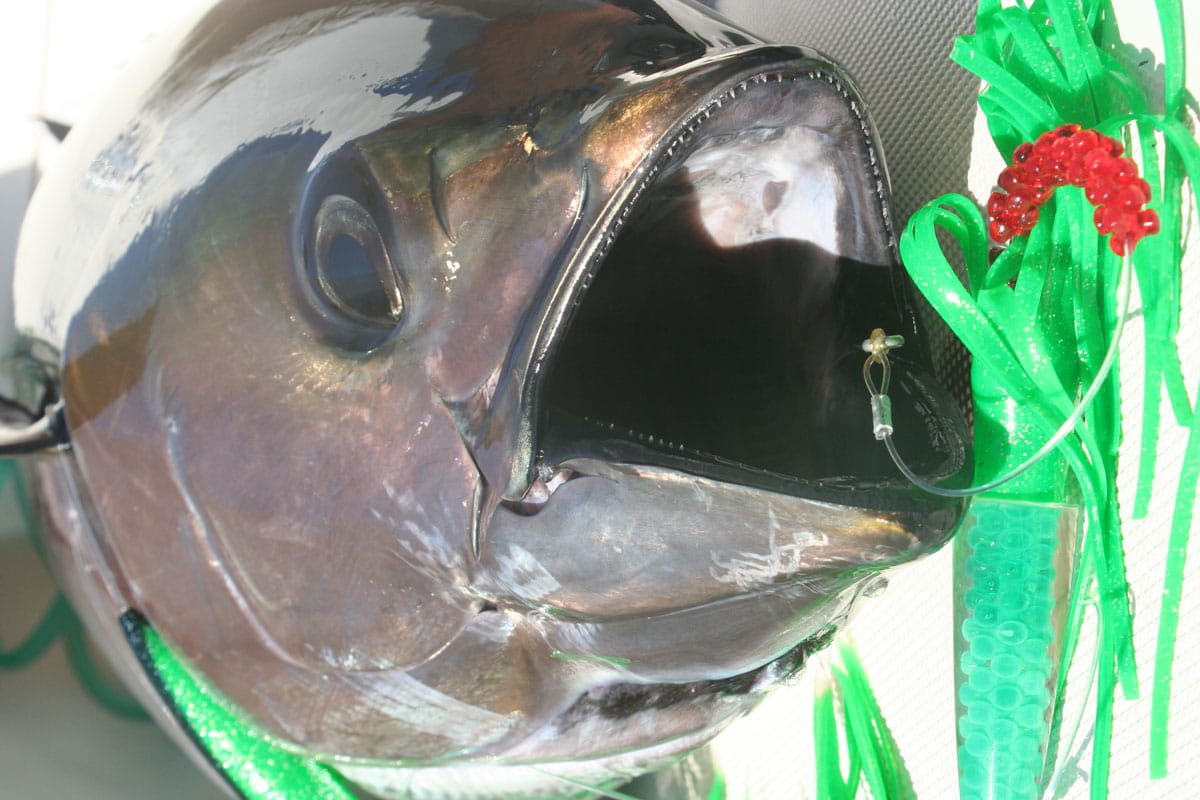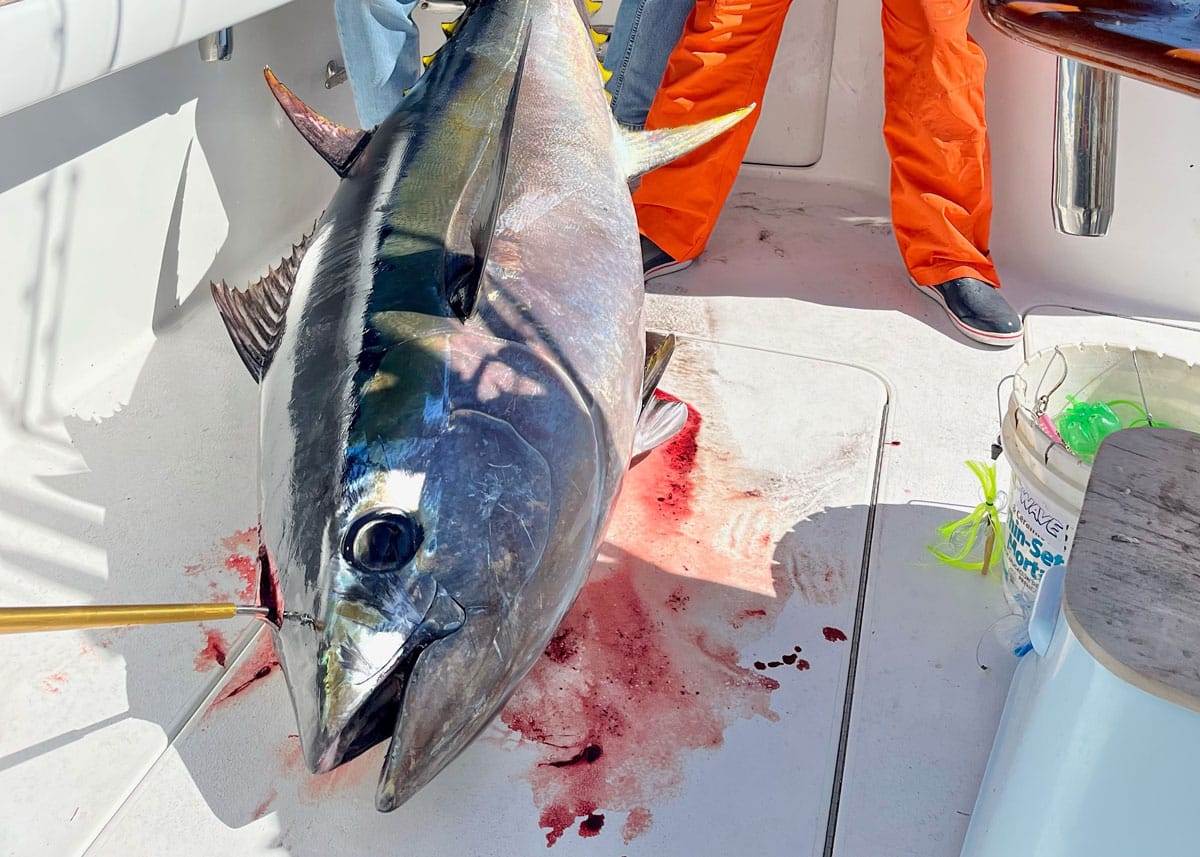Description
Bigeye are large growing tuna that can reach up to 400 pounds with a dark black back and yellow fins and finlets. The black back turns to silvery grey sides and a silver belly. Bigeye are very similar to yellowfin tuna, but their fins are not as long and they have some internal differences. They have a larger eye than most other tuna, resulting in their name. They inhabit open offshore waters in schools and sometimes travel or feed with other species of tuna such as the yellowfin or with large creatures like whale sharks and whales. They are usually caught trolling natural and live bait as well as lures or by chunking cut bait. In many areas, they are not as common as other tuna, making them a prized catch as well as a prized meal.
Ideal Conditions for Bigeye Tuna
SatFish maps show you where to find ideal conditions for bigeye:
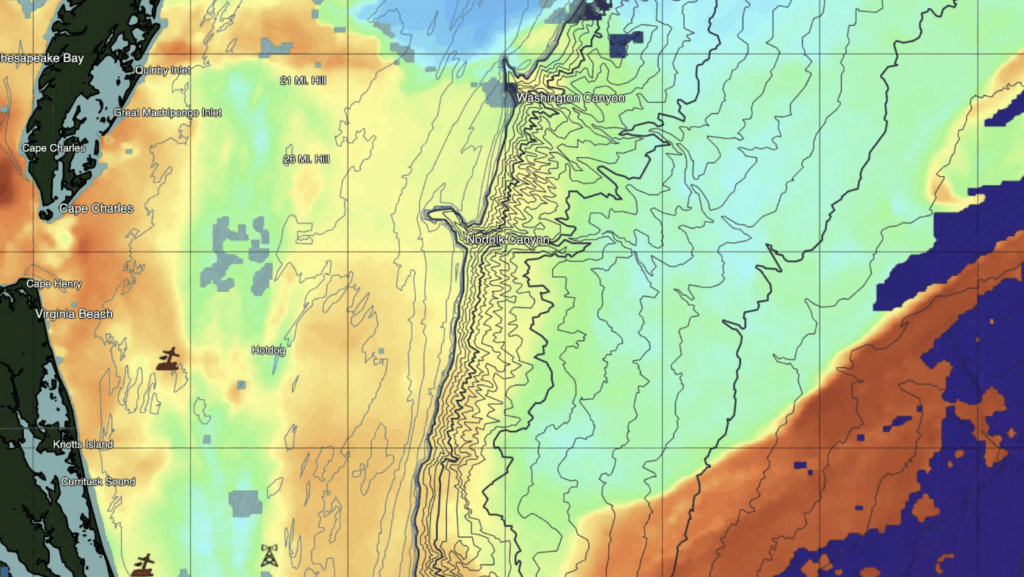
- Sea Surface Temperature:
55-84°F / 12-30°C
(63-72°F / 17-22°C is ideal) - Water Color / Chlorophyll:
Clean blue to blue-green, 0.01-1 mg/m3 - Bathymetry:
Offshore canyons, submarine slopes & seamounts; bigeye tend to associate with deeper water features
When the conditions line up, bigeye tuna can be found in specific offshore zones, especially deeper water spots that don’t always hold other tuna. These fish love cooler, low light environments, so places like seamounts, underwater drop offs, and steep ridges are all prime territory. Look for areas where the thermocline sets up and you’ve got some upwelling — that’s where the bait stacks, and the bigeye won’t be far behind. Bigeye will also hang around floating debris, kelp paddies, and fish aggregation devices (FADs), and they’ll sometimes show up near deep offshore structure like oil rigs or current breaks, especially if there’s a ton of bait. They spend most of the day deep, a few hundred feet down, then rise toward the surface at night to feed. Because they can handle colder temps and low oxygen levels, they’ll often be in water that yellowfin avoid. If you’re fishing deeper and marking fish on the edge of structure or in that 200 to 500 foot zone, there’s a good chance you’re into bigeye.
Bigeye Migration Patterns
Bigeye tuna follow deepwater migration routes shaped by temperature, prey, and ocean currents. In the western Atlantic, they show up offshore from late spring through early fall, especially along the U.S. East Coast and Northeast canyons. Their presence is closely tied to warm eddies that peel off the Gulf Stream — zones that concentrate bait like squid and deepwater forage fish. Summer and early fall are the prime seasons, when these eddies overlap with structure like canyons and seamounts.
In the eastern Atlantic, bigeye move north toward areas like the Azores, Madeira, and Canary Islands during summer and fall. These islands sit along major current systems and offer prime offshore structure where warm water meets nutrient-rich upwellings, drawing in bait and big predators.
Around Hawaii, bigeye tuna are a year-round target. They thrive in deep, stable water temperatures and are most active from late afternoon into the night. These fish often hold deep during the day and rise at night to feed, making nighttime chunking and jigging popular techniques in the islands’ offshore zones. Hawaii’s consistent temperature and forage-rich seamounts make it one of the most reliable spots to connect with quality bigeye.
SatFish Regions Where Bigeye Can Be Found
- Hawaii (year-round; deepwater, consistent target species)
- U.S. East Coast – Mid-Atlantic & Northeast Canyons (summer through early fall; best from NC to Georges Bank)
- Baja Offshore (rare; occasionally in deep offshore zones, not a common target)
- California (rare, but a welcomed treat)

How to Catch Bigeye
Bigeye tuna are typically found in small groups and are known to associate with pilot whales, especially over deep offshore canyon systems. This pairing isn’t random—both species frequently target squid and mesopelagic baitfish, which are abundant in these deepwater zones. Bigeye are particularly well adapted to this environment. Their large eyes are specialized for low-light conditions, allowing them to hunt effectively in depths ranging from 200 to 500 meters (roughly 650 to 1,640 feet) during the day. At night, they often rise closer to the surface to feed. These tuna tend to hold along steep canyon edges, thermoclines, and convergence zones where bait concentrates.
Anglers commonly target bigeye using trolling techniques with large skirted lures, rigged mullet or squid, or deep-diving plugs pulled at 6–8 knots. Productive zones include offshore seamounts, shelf breaks, and areas with strong currents or structure. Because bigeye often feed deeper than other tunas, night chunking with squid or sardines and vertical jigging near deep drop-offs can also be highly effective. Their strikes are known to be powerful and fast—earning them a reputation for hitting like a freight train. These fish are elusive and not as abundant as yellowfin or skipjack, which makes a successful hookup all the more rewarding.
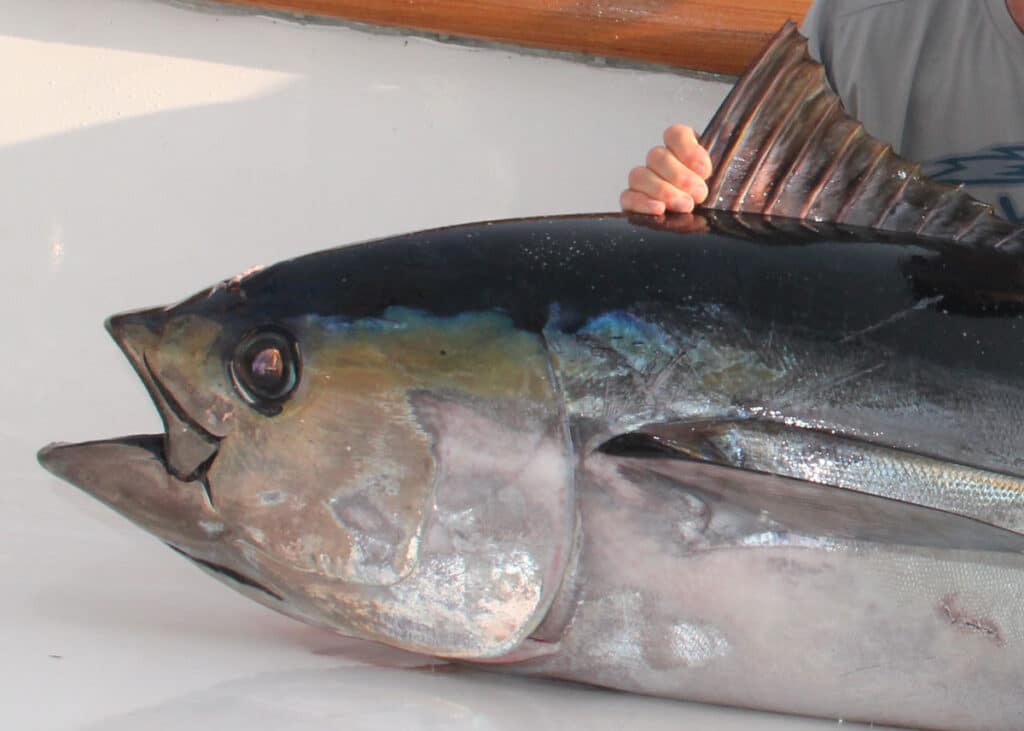
From Our Blog
Resources & Further Reading
NOAA Fisheries – Bigeye Tuna

